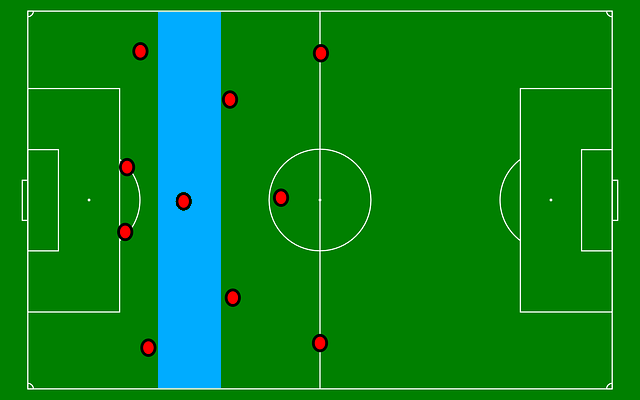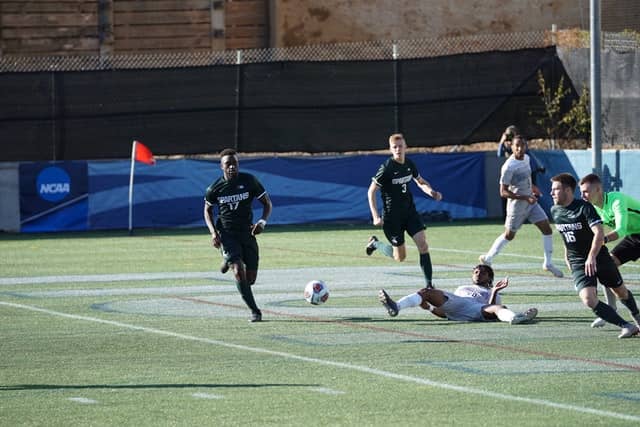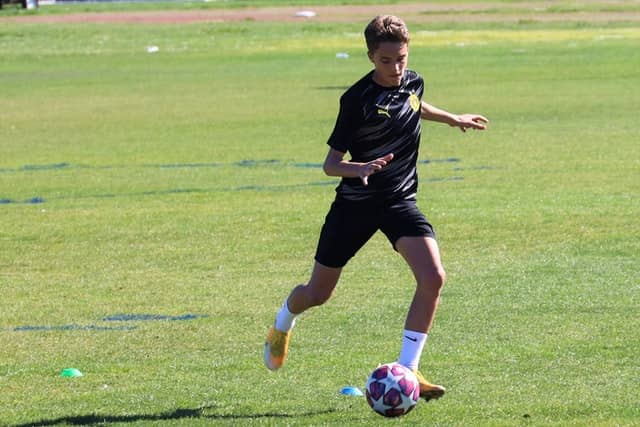No matter how long you’ve been watching and playing soccer for, there are some terms and concepts in soccer that might still sound very confusing to you at first.
For example, sometimes you find people using the terms “defensive midfielder” and “holding midfielder” interchangeably as if they are the same thing.
Other times, you hear people discussing how a defensive midfielder is different from a holding midfielder.
So the question is, which one of these statements is correct?
To an extent, both of them are correct. Which one of them is correct depends on the context of the discussion in place.
The answer is a little bit confusing I know, but I will explain everything in detail.
But first, in order to be able to understand the difference between the two, we will have to make a distinction between a defensive midfield area and a defensive midfield role.
A defensive midfield area is the area on the field between the defensive players and the other midfielders on the team (i.e., central midfielders, wide midfielders…).

As for the defensive midfield role, it is one of the roles that might be played by the players that usually remain inside the defensive midfield area.
In other words, both the holding midfielder and the defensive midfielder are players that try their best to remain inside the defensive midfield area. However, each one of these players have some unique roles that they are required to play.
So to sum this up before we move on, if we are talking about defensive midfield as an area of play, then the terms defensive midfielder and holding midfielder (a player who “holds” their position inside the defensive midfield area) can be used interchangeably.
However, when we start discussing the roles played inside the defensive midfield area specifically, then the 2 terms will be referring to different things.
With that said, the rest of the article will explain the different roles played inside the defensive midfield area itself, which can be divided into 3 categories:
- The defensive midfielder role
- The holding midfielder role
- The deep-lying playmaker role
What does a defensive midfielder do in soccer?
Keep in mind that we are now discussing the “defensive midfielder role” itself and not the defensive midfield players generally (the players that play inside the defensive midfield area). I know, the naming is terrible, but that’s what we got.
A player in the defensive midfield role has a single job, and that is to protect the goal and to prevent the opponent from advancing forward and scoring.
They will do whatever it takes to protect the goal. For example, if a fullback decides to join the attack as a winger, then the defensive midfielder might take their place in the defense till the fullback comes back to their position.
In other words, a player in a defensive midfield role can be used as a quick alternative to any defender that might not be in their position at the moment.
And in the case where all of the defense players are already in their positions, the defensive midfielder will act as an extra defender to further strengthen the defense of the team.

From the description of the defensive midfielder role, you can easily tell that some of the most important skills that a defensive midfielder should have are tackling in the right place at the right time, and a complete spatial awareness.
In addition to this, the defensive midfielders should show some strength when intercepting their opponent. They should have agility to instantly adapt to the opponent’s moves, and so on.
So in simple words, a defensive midfield role requires the player to keep their full focus on defending the area in front of the defenders and to take the defenders’ place when needed.
What does a holding midfielder do in soccer?
A holding midfielder is another type of player that plays inside the defensive midfield area.
Like the defensive midfielder role, the holding midfielder is also required to stay close to the defense players during the match while the other midfielders attack.
However, one key difference between the two roles is that the holding midfielder role is not designed to cover for the other defensive roles on the field during the game like the players in a defensive midfielder role do.
The holding midfielders “hold” their position in front of the defense and they defend their goal when their team does not have the ball.
However, the responsibility of the holding midfielder doesn’t stop here. A holding midfielder plays a role when their team has the ball too.
The holding midfielder usually transitions the ball from the defenders/goalkeeper to the other midfield players by making short and quick passes.
They also redirect the ball from one area to another by receiving a short and quick pass from their teammates and instantly passing the ball to another teammate in another position on the field.
In other words, the holding midfielders work as a middle man when their team has the ball and they make instant transitions in the ball position whenever they need to.
Accuracy, great trapping skills, great tackling skills, vision, and positional awareness are extremely important skills for a holding midfielder, alongside some other skills like agility and so on.
Before we close this article, there is another type of a holding midfielder that I should mention. And that is the “deep-lying playmaker”.
What does a deep-lying playmaker do in soccer?
Deep-lying playmakers are special holding midfielders that focus less on their defensive skills and more on their playmaking skills. They do this while still remaining inside the defensive midfield area.
If you don’t know what a playmaker is, they are basically a player that tries to pass the ball to their teammates in a way that puts them in a great position to score. In other words, they are players that assist goals.
So as the name suggests, a deep-lying playmaker is a playmaker that remains inside the defensive midfield area.
Instead of making short and quick passes like regular holding midfielders do, the deep-lying playmakers attempt to make long passes deep inside the opponent’s side of the field in order to put their attacking midfield players and their strikers in an excellent position to score.
Final words
So there you have it. You now know the difference between a holding midfielder and a defensive midfielder.
Basically, when people refer to the defensive midfield area, they are referring to all 3 roles that we have mentioned above. However, when they mention the defensive midfielder as a role, they are referring to one of the roles played by players who remain inside the defensive midfield area.
Before I end this article, it is worth noting that the defensive midfield role is not being used as often as it has been used in the past.
In other words, there are fewer and fewer clubs that are placing a player in the defensive midfield area just for the sake of defending and covering up the other defenders in case they leave their area.
Many of the soccer clubs are transitioning some of the traditional tasks of the defensive midfielder role to the central defense players in order to increase the team’s efficiency.
Which is why many people today say that the holding midfielder is a modern defensive midfielder. The players that play in the defensive midfield area today are usually required to play as a holding midfielder instead of taking the traditional defensive midfielder role, which is why both terms are being used interchangeably more and more often.

